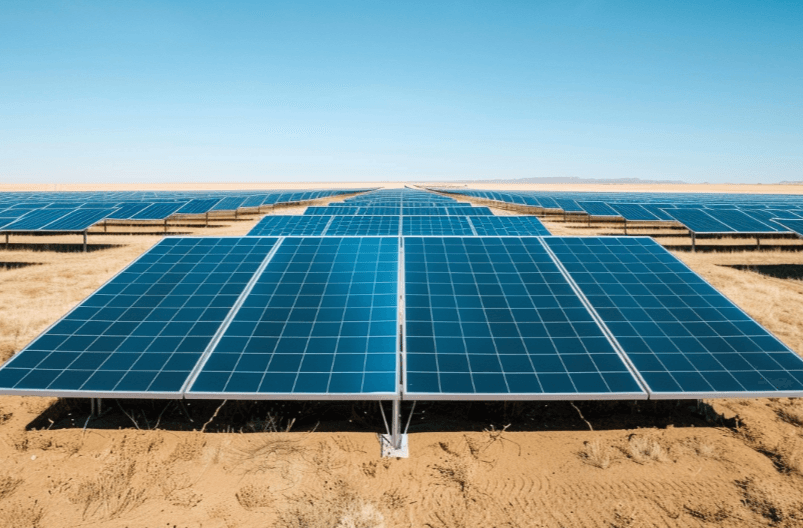
In the heart of our Lone Star State, the surge in solar energy adoption reflects a national trend towards sustainable living. Texas, with its vast landscapes and significant sunlight exposure, offers an ideal setting for harnessing solar power. However, the state’s diverse and often harsh weather conditions pose unique challenges to solar panel efficiency and the durability of roofing materials.
Understanding Texas Weather Patterns
Texas is a state of weather extremes, from scorching summers with temperatures soaring above 100°F to sudden, severe hailstorms and torrential rains. It’s not uncommon for Texas to experience over 230 sunny days per year, making it a prime location for solar energy production. El Paso is a perfect example, which gets almost 300 sunny days per year! However, this abundant sunshine comes with the challenge of high UV exposure and heat, which can affect both solar panel efficiency and the integrity of roofing materials.
Moreover, Texas ranks highest in the nation for hail damage, with the National Oceanic and Atmospheric Administration (NOAA) reporting the cost of overall natural disasters well into the billions each year. These weather extremes necessitate a careful consideration of the materials and strategies used in solar panel installations and roofing to ensure they can withstand the rigors of the Texas climate.
Impact of Intense Sunlight and High Temperatures
The abundant sunshine in Texas, while a boon for solar energy production, can also be a double-edged sword. Solar panels operate by converting sunlight into electricity, but their efficiency can decrease as temperatures rise above optimal levels. Studies have shown that solar panel efficiency can drop by about 0.5% for every degree Celsius above 25°C (77°F). Given Texas’ summer temperatures can often exceed 95°F, this could potentially lead to a noticeable reduction in efficiency during peak heat periods.
Moreover, the intense UV exposure and high temperatures can accelerate the aging process of roofing materials. Traditional asphalt shingles, for example, may become brittle and lose their protective granules more quickly under the Texas sun, leading to a shorter lifespan and increased risk of leaks.
Dealing with Hail and Heavy Rains
Hail poses one of the most direct threats to solar panels and roofs in Texas. The state’s position in “Hail Alley” means it experiences more severe hail events than any other part of the country. Hailstones can cause immediate and significant damage to solar panels, cracking their protective glass and impairing their function. For roofs, large hailstones can dent, crack, or even puncture roofing materials, leading to water ingress and further structural damage.
To combat this, solar panels certified as hail-resistant and designed to withstand the impact of hailstones are an essential investment for Texas homeowners. Similarly, roofing materials rated for impact resistance can offer better protection against hail damage. Proper drainage systems are also vital in managing heavy rains, preventing water accumulation that can lead to leaks and structural damage over time.
Mitigating Effects of Severe Storms and High Winds
Texas is no stranger to severe storms and high winds, especially during hurricane season along the Gulf Coast and spring tornadoes in the northern regions. These weather events can exert tremendous force on solar panels and roofing systems, risking detachment or damage if not properly secured. The wind speeds in certain parts of Texas can reach almost 150 miles per hour during extreme weather events. To mitigate these risks, solar panel installations must adhere to stringent mounting and anchoring standards that consider local wind load requirements.
For roofing, selecting materials with high wind resistance ratings and ensuring they are installed with techniques that enhance their wind uplift resistance are critical. This might include using specially designed shingles, tiles, or metal roofing systems that lock together more securely and using more nails or adhesive to keep them in place.
Maintenance and Care for Solar Panels and Roofs in Texas
Regular maintenance, like many things in roofing, is key to extending the lifespan of solar panels under the challenging Texas weather. For solar panels, this includes periodic cleaning to remove dust, bird droppings, and other debris that can block sunlight and reduce efficiency. After severe weather events, inspections should be conducted to assess and repair any damage to the solar panels or the roofing system to prevent long-term issues.
Roof maintenance should focus on ensuring that materials remain in good condition and that the structure is free from debris that could trap moisture or block drainage pathways. This is particularly important in areas prone to heavy rains and hail, where water damage and physical impacts can compromise the roof’s integrity. Professional inspections at least once a year can help identify potential issues before they become significant problems, ensuring that both the solar panels and the roof remain effective and durable against the Texas climate.
Wrapping Up
By choosing durable materials, ensuring proper installation, and performing regular maintenance, homeowners can safeguard their solar investments against extreme temperatures, hail, and severe storms. Despite these environmental challenges, the abundant sunshine in Texas offers significant potential for solar energy.





